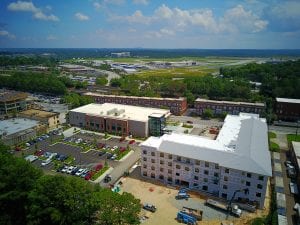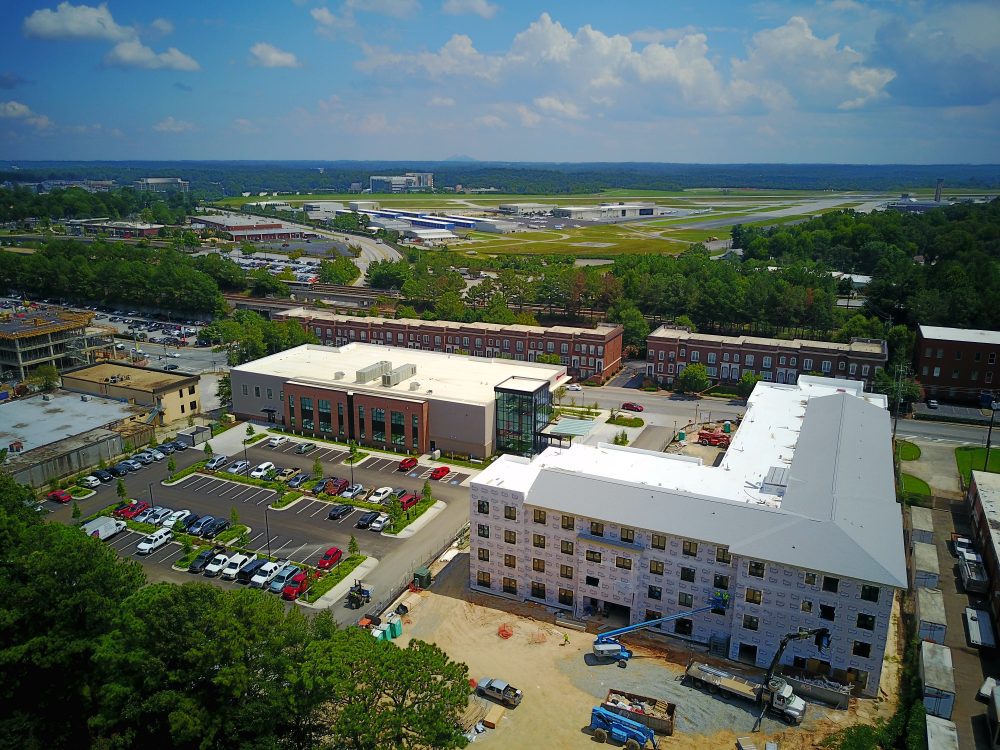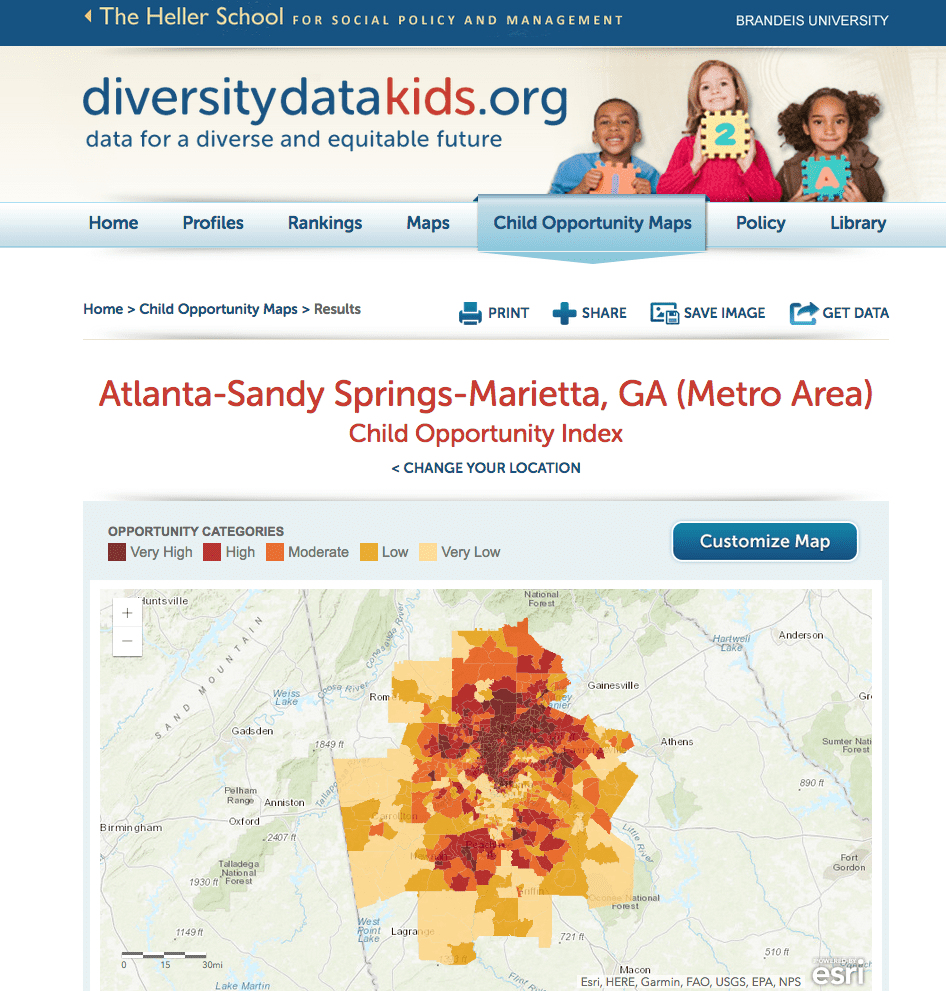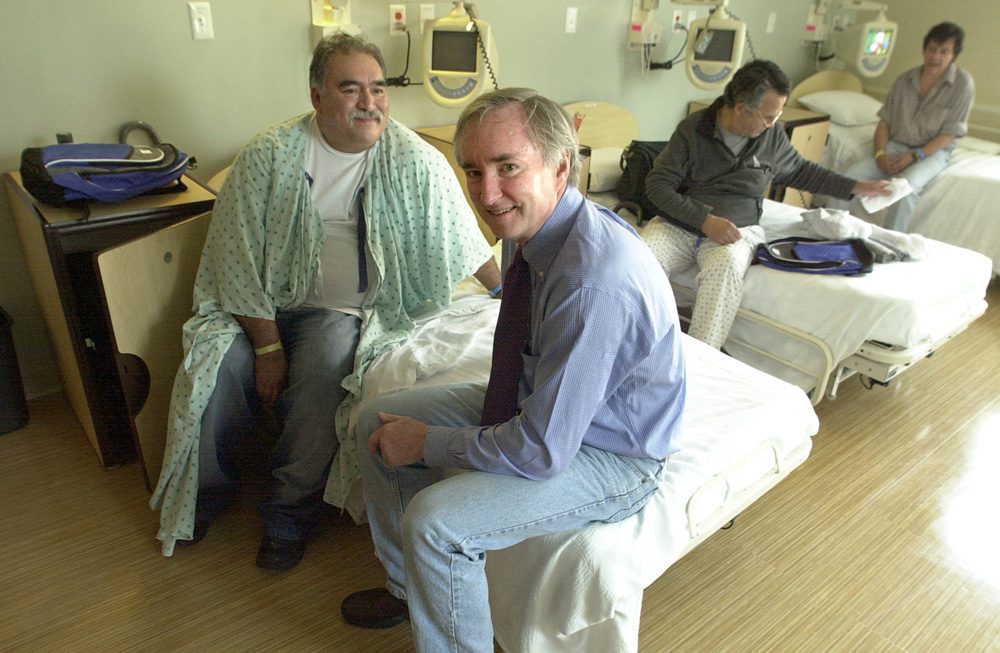
A senior housing building at Mercy Housing Southeast’s Mercy Park development. Photo courtesy of Mercy Housing Southeast
Housing organizations have a mission to improve the quality of life of low-income communities. When an illness or behavioral health issue derails the household of a resident, owners of affordable housing developments care on a mission level, but are also affected on an organizational level. How can we assure a long and stable tenancy if there are no avenues of support for people with health challenges?
Since the Affordable Care Act (ACA) was enacted in 2010, housing organizations have held out hope that the push toward preventative care and the need to achieve measurable improvements in patient health would prompt health care organizations to look beyond their usual systems for new partners. Wouldn’t the organizations that house many of their patients and enjoy a relationship of trust with them be natural candidates?
One common place for partnerships to start is with providing on-site health services and programming, such as chronic disease management, behavioral health support, and educational events that promote more effective self-care behaviors, like routine checkups. There’s a subset of housing nonprofits, like Mercy Housing (I am past president of the Southeast region), that already have dedicated resident-services staff who work onsite to bring in all kinds of programs, not just those related to health care. These staffers respond to the needs and direct requests of residents to develop programming and as a result become trusted advisers to tenants. They’re often the first to know when families don’t have food in the fridge, someone’s kids are failing in school, or a chronic disease is debilitating a resident. This makes them both aware that health programming is necessary and able to identify which kinds are most needed.
Housing staff are challenged to provide effective support to residents who struggle to navigate health systems and expectations that are rapidly changing. Low-income heads of household often think twice about missing a work day to take a sick child, or themselves, to the doctor. And after years of reliance on the emergency care system, how can we give households the confidence to migrate from the ER to preventative care and an untested relationship with a primary-care physician?
One hope is that by removing the transportation hurdle and bringing health care closer to where people live, there wouldn’t be as many barriers to health which would make an improvement in a person’s life. Can health care organizations locate programs, or even mini-clinics, at more housing sites? This is an area of great promise, but making the change carries a number of complications.
Many good examples exist of a health care provider or medical school servicing a senior or special-needs development with a weekly visit for blood pressure checks and chronic disease management counseling, e.g., “Understanding Diabetes.” The housing site provides space and the nurses or medical residents come at the appointed hour to help residents with things like questions about medications or how to better coordinate between various specialists they are seeing. (Also read this piece on co-location.) Ideally, the housing organization should market the benefits of the health care partner, but also use its relationship to drive tenant participation in on- and off-site programming. That participation will be rewarded with better health outcomes. This is the natural symbiotic relationship that has value for the health care side.
Resident-services staff cover so many program areas that they cannot be health experts. Beyond the programs offered to residents, affiliations with health-care institutions such as medical schools or hospital systems provide important learning opportunities for housing staff on topics such as key health-related warning signs and where to find emergency support.
And yet the promise of these relationships is not yet fully realized. Part of the reason is a set of misunderstandings and mismatches in working styles and needs between affordable housing managers and health care providers. If we can talk honestly and directly about these challenges, as well as the benefits, we can do better at overcoming them.
Health and Housing Misunderstandings
First, there is the issue of funding expectations. Housers tend to rely on fundraising to pay for resident-services staff because they generally can’t include their salaries in the operating budgets of publicly funded projects (with the exception of the rare HUD service coordinator grant). This pretty much assures that resident-services staff are not well paid and will likely get moved around from development to development to take advantage of any available funding. This is frustrating.
[Resident-services staff are] often the first to know when families don’t have food in the fridge, someone’s kids are failing in school, or a chronic disease is debilitating a resident. This makes them both aware that health programming is necessary and able to identify which kinds are most needed.
Housing developers see a health care industry that represents a significant share of the U.S. economy and can’t understand why it isn’t interested in underwriting the cost of resident-services staff in the nonprofit affordable housing sector to assure better outcomes. One of the reasons for this misalignment is that health care organizations often assign these partnerships to their marketing departments, which regard the relationships as branding opportunities rather than as significant long-term partnerships to alter the social determinants of health.
Those who work in the health care industry don’t understand the limits on a housing organization’s funding, so they are confused when they’re asked to pay for staff the housing organizations appear to already have. (Though many are willing to contribute if increased participation in their programs is the end result.)
When it comes to developing an on-site clinic, health care organizations may assume that housing organizations can easily secure grants to design and furnish space to their specifications and deliver it free for their use.
Health and Housing Mismatches
In a typical on-site services partnership, a housing executive or senior manager reaches out to a health care executive to propose targeting some housing development(s) in the health care organization’s footprint. To make this a success, there are a number of mismatches that must be addressed.
Consistency. Health care is a dynamic industry. Shifting priorities and staff realignments are a constant struggle, leaving housing partners at a disadvantage when the executive who understood housing or community development is promoted or reassigned. For programming, this means the priorities of the health care provider often change abruptly at the expense of gathering data, resident trust, and buy-in for the next stage of programming. If a medical school is involved, the program’s hours will be dictated by the school calendar and subject to change on a moment’s notice with any change in the school’s administration.
There is also the question of who a program is open to. This can come down to a tension between crafting a highly targeted health care program for a known population and assuring sufficient “traffic” to make the program viable. A health organization will see the concentration of need in the larger neighborhood and want to respond. Reaching a larger population will make a program easier to sustain, ameliorate the problem of managers not always being able to bring a large number of residents to the program, and feel more worthwhile for the health organization. However, housing organizations, on top of being focused on their residents’ needs, will be nervous about the liability of having the general population access their buildings.
Privacy. Housing staff cannot get too close to a resident’s personal health information without triggering HIPAA. One of Mercy Housing’s first program models was to have on-site housing staff encourage residents to see doctors who were available through a remote diagnosis and treatment model, known as telemedicine, for their behavioral health and chronic disease management needs. The housing staff’s knowledge of the residents’ protected health information triggered HIPAA’s demanding standards for managing the data to assure complete safety and privacy. If the staff assisted a resident in scheduling an appointment, their knowledge and use of the resident’s protected health information would be a violation of privacy and subject to significant penalty under HIPAA. Housing organizations must take HIPAA seriously, and understand when it applies.
Doing the Work
Full-service clinics with telemedicine technology at mixed-use sites allow for a much larger resident pool to be supported. Telemedicine is an efficient way to bring services to people as a number of health disciplines can be made available by computer during times that least affect work and school commitments. This technology works best with a client pool larger than a single building. Mixed-use developments can fit an efficiently designed micro-office available to the entire community within their site plan in a way a standalone assisted building could not.
Mercy Housing Southeast’s Mercy Park development, completed in partnership with Mercy Care St. Joseph’s Health System, is an example of the exciting model of co-locating affordable housing and a federally qualified health care center. The residential portion of the development includes indoor and outdoor social and recreation space for seniors, as well as opportunity for the seminars, food demonstrations, and meals. The health care center is available to all residents of the housing on site, and by virtue of its mission, completely committed to addressing the health needs of the larger lower-income community.
I am encouraged for us and for the populations we serve. Housing and health care organizations have survived the early “getting-to-know-you” stages of collaboration and have learned critical lessons about one another’s business models. We know who needs to be tasked with managing the conversations that decide what we want to accomplish together and how to get it done. I believe we remain engaged across the housing and health care sectors because we recognize each other’s genuine commitment to improving the quality of life for low- and moderate-income households. And best of all, our perseverance is being recognized by those who allocate low-income housing tax credits, underwrite the debt and equity that is the lifeblood of our work, and offer the philanthropic support that generates some of the most creative problem-solving. Time to double down on our effort.






This is a very useful summary of issues with housing and health care partnerships. Thanks for sharing the Mercy experience.